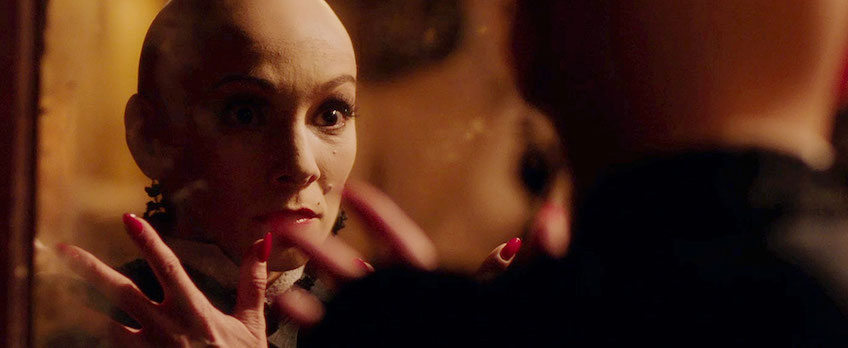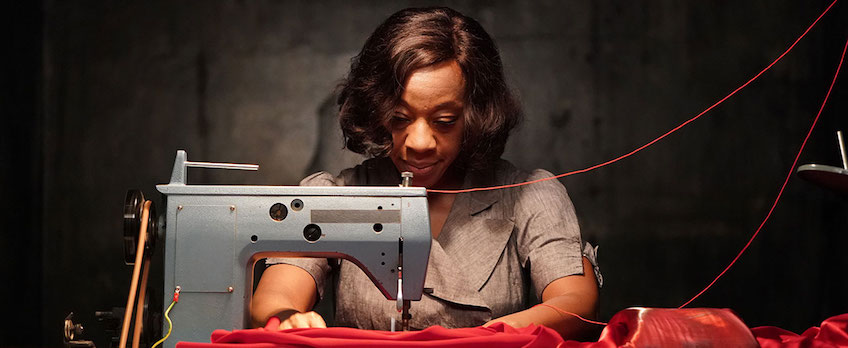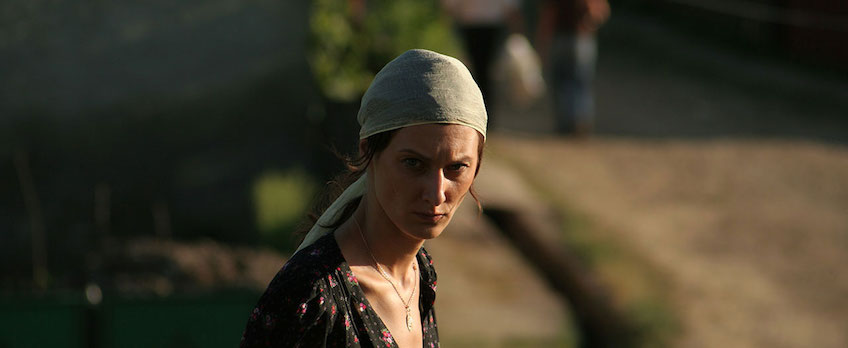Director in Focus: An Interview with Peter Strickland

Peter Strickland’s horror-comedy In Fabric is lurid and decorative in style, but it gets under your skin through tactile sound. In the film, hands glide over cloth, fingers flick through store catalogues, and scissors slice through glossy paper. A red dress, possessed, grinds violently back and forth on a clothes’ rack.
It makes sense then, when Strickland tells me that despite critics associating the film with pulpy Italian gialli, he sees In Fabric as something else – an ASMR film, inspired by the weird, sensory videos he found trawling through YouTube late at night.
“I always wondered, ‘Why do I like this?’,” he says. “Because I don't have an intellectual response to it. But I had a very visceral response”.
“I wanted In Fabric to be a bit like a mild drug that puts the audience into a bit of a trance, puts them to sleep” he tells me. “I do regard film as a kind of hypnosis.”
In Fabric follows the path of a demonic, cursed dress and the lives which it ruptures. The dress comes from Thames Valley Dentley & Soper, a department store where Strickland has crafted something of a fetishist’s paradise: full of stockings, witchy retail staff, and dismembered, sometimes menstruating mannequins. The fictional store was inspired by a real one: Jackson’s of Reading, located on the High Street fashion strip Strickland frequented as a kid. “It was like a religion,” he recalls.The film at first revolves around Sheila (Marianne Jean-Bapiste), a lonely bank teller and single mum persuaded into purchasing the “artery”-coloured dress by theatrical retail worker Miss Luckmoore – played with exceptional freakiness by Strickland regular Fatma Mohamad.

Marianne Jean-Baptiste in In Fabric
Strickland chose a dress as the film’s haunted object for both its graceful aerodynamism and the emotions that item of clothing specifically evokes. “I really wanted to explore anxieties connected to clothing. Fetishism, dysmorphia, sadness,” he says.
“There's so much emotional investment you have in a piece of clothing; it’s just a piece of fabric, but it's not… It's a much more visceral thing, about sweat and bodily stains, and how we respond to those is a very primal reaction. Whether it's disgust, whether it's being turned on.
The annals of retail also provide ripe ground for In Fabric’s wry observations on the absurdist, coded language found in the service industry. In the film, a washing machine repairman's drab expository monologues sedate anyone who listens; Dentley & Soper’s staff speak exclusively in tangled, philosophical tangents; and at Sheila’s bank teller job, she’s reprimanded for taking toilet breaks out of her designated “feeding time”.
“I think there's an element of performance and all these things,” says Strickland. “The British language is very particular in terms of the way we use euphemisms and corporate language to disguise pretty uncomfortable things.”
“I’ll never forget when I went to the job centre years ago, and there was an advert for a shelf stacker on the night shift for a supermarket. It took me a while to actually know what it was because the job title was ‘Twilight Replenishment Operative!’”

Hilda Péter in Katalin Varga
Strickland didn’t study at film school. He was an experimental electronic musician working a multitude of middling day jobs before an inheritance allowed him to produce his breakthrough, debut film – the Transylvanian rape-revenge tale Katalin Varga (2009).
He learnt about film at places like the Scala theatre in London, where Jane Giles’ democratic, challenging film programming left an impression. “She was breaking down those barriers between low art and high art, because you had Bergman, Fassbinder, Tarkovsky at the top, you had all these tiers. But now those tiers are being eroded and she was responsible for that, to a huge degree” he says.

Toby Jones in Berberian Sound Studio
With Strickland, the references are dense and fundamental to his filmmaking. In his 2012 film Berberian Sound Studio, a timid English sound engineer stabs vegetables and mentally spirals while working on a giallo in Rome. In The Duke Of Burgundy, he constructed a lush, utopian universe sans men, where a sadomasochist romance between two women takes notes from ’70s Euro-erotica. In conversation, Strickland is quick to map out a constellation of filmmakers that have informed his own excessive vision: from the Baroque flair of Peter Greenaway to the hypnotic abstractions of Jordan Belson.
For his film project that has been seven years in the making – a look into euphoric queer clubbing in ’70s New York called Night Voltage – he’s turned toHi-NRG music and ’70s gay pornography. He says he was drawn to the pornography of that era because of its psychedelic elements, its attention to artifice, and the way it can at times appear dream-like and soporific.
“I think you can learn a lot from those films” says Strickland. “For me, it's always interesting to take cinema that other people have discarded, and see what you can steal from it.”